Do you have a cedar tree? If so, you know that it can be challenging to grow plants under them as few plants can thrive and survive as cedar trees grow on moist, acidic, and well-drained soils.
Cedar trees are a popular type of tree because they offer many benefits. They provide shade, prevent soil erosion, and work well as windbreaks.
They are beautiful, but they can be challenging to maintain. Many different plants can be grown in your yard, but a few thrive under cedar trees.
Following are some of the Ground Covers, Perennials, Shrubs, and Ferns, which grow well in the environment under the cedar tree.
1. Polystichum Munitum (Western Sword Fern)
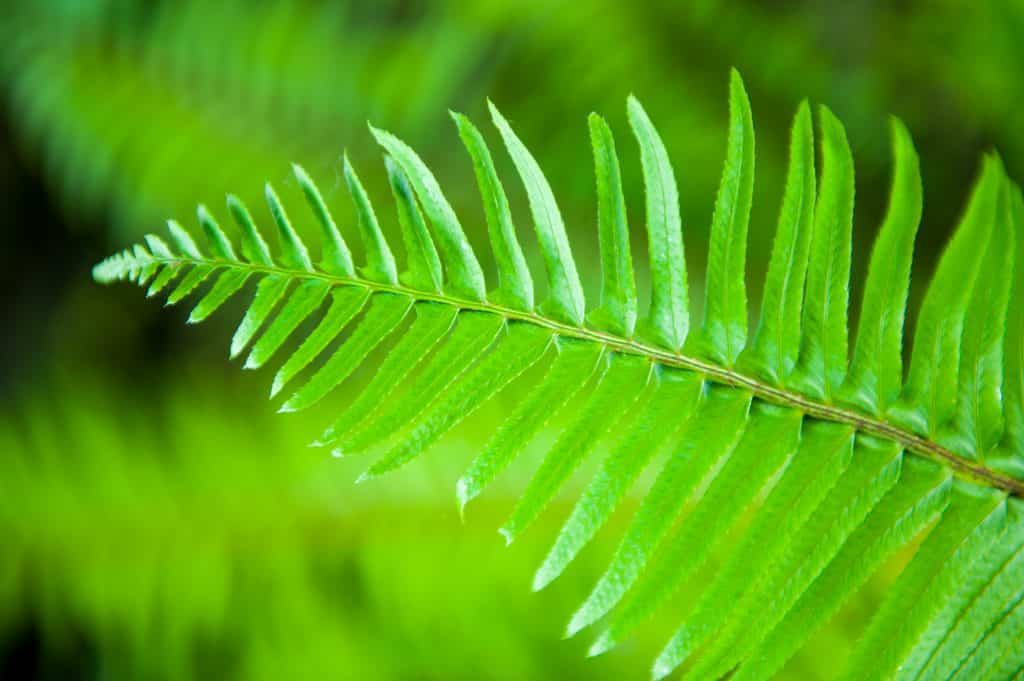
A robust and versatile fern that remains fresh-looking quickly grows throughout the different seasons.
They are very resilient, survive occasional droughts, and are deer resistant. They grow well in part or full shade environments with well-drained and moist soils.
They are native to the wet forests throughout western North America (California, Montana, Idaho, South Datoka, to Alaska).
During the first growing season, water regularly ensures a widespread root system.
Once planted, this evergreen fern can grow between 3 and 6 feet tall.
2. Rhododendron Austrinum (Florida Flame Azalea)
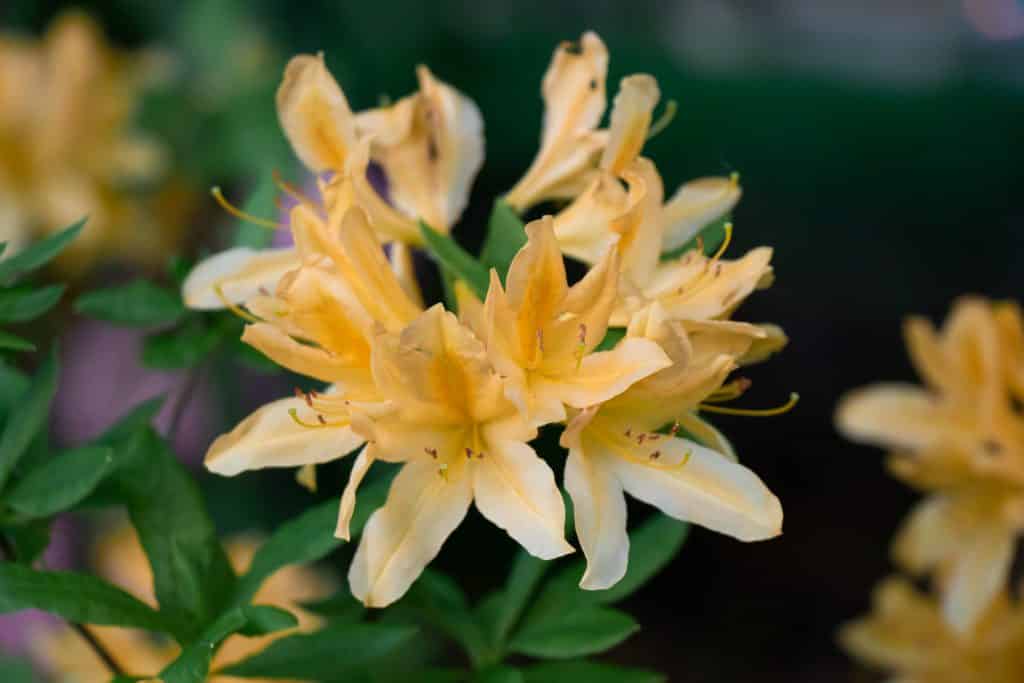
These shrubs are an excellent choice for planting under cedar trees.
They are native to the southeastern United States, specifically Florida, in wooded slopes or marshes along rivers at 0-100 m above sea level.
They are well-known for their vivid yellow or orange flowers with pleasant scents that attract hummingbirds, butterflies, and bees.
This plant can grow to 10 feet tall and bloom during the spring season.
It is best to grow them under shade from direct sunlight as they do not grow well in windy spots; hence it is best to avoid them.
3. Athyrium Filix-Femina (Lady Fern)
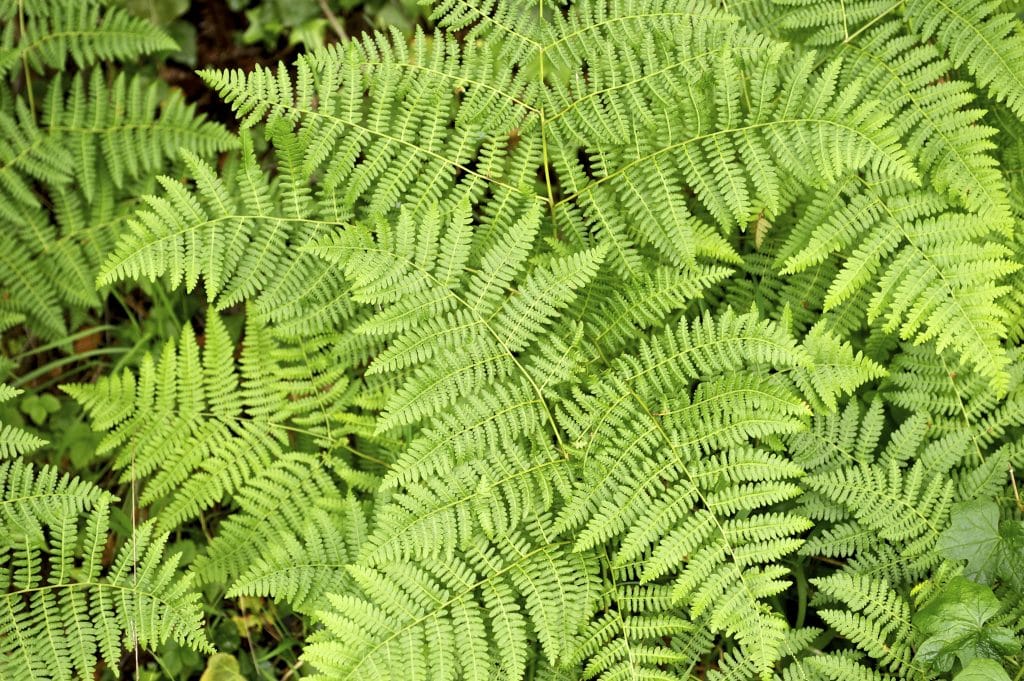
If you are looking for low maintenance, pest, and disease-free plant to grow under your cedar tree, choosing Lady Fern won’t go wrong.
They will fit your yard or garden perfectly for their graceful, exquisite, and fine-textured appearance.
Grown in the moist woods or meadows along the streams in the wild and are often found in the damp, shady environment where they can be found throughout northern North America, Europe, and Asia. When full-grown, they can reach 5 feet in height.
They are easy to grow in rich, medium moisture, well-drained soil, and preferably under shade.
However, these plants can still grow under full sun, provided the grounds are well moist.
That said, compared to other ferns, they are relatively tolerant to the sun and dry soil.
4. Convallaria Majalis (Lily Of The Valley)

Part of the asparagus family, this flowering plant is native to Europe and Asia in the Northern Hemisphere of the cool temperate area. They are widely cultivated in North America.
The flowers are white in color and can grow up to 12 inches in height and bloom during the spring.
Known for their sweet and alluring scent, they spread quickly and easily, covering large areas.
The plant is easy to grow, preferring partial shade areas with moist, organically rich, well-drained soil.
They can also adapt to full sun or shade with well-watered soil; however, note that the ground should not turn soggy.
They are best used as ground cover, and ideally, planting should take place by late autumn as cool temperatures during the winter are required to help the growth.
5. Mahonia Nervosa (Cascade Barberry)
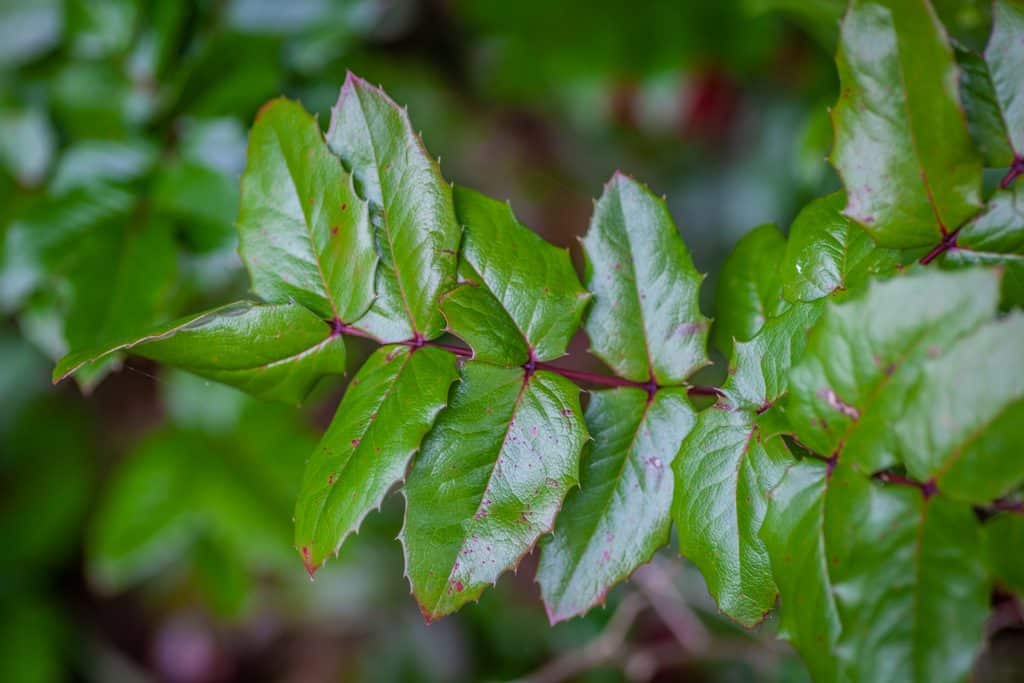
They are commonly known as Low Oregon Grape, Cascade Oregon-Grape, Longleaf Mahonia, or Dull Oregon-Grape. They are also known as Berberis nervosa.
These evergreen shrubs are called “dull” because their leaves are not as glossy as the Tall Oregon Grape’s leaves and “long-leaf” due to longer leaves.
They can grow up to 2 feet, and they are usually found in light woodland and forest edge areas.
Leaflets of the holly-like plant are thick and leathery, somewhat shiny with pointed tips that bear small spiny teeth on their margins.
The yellow flowers grow in mid-spring to early summer, and the blueberries mature in the fall.
Perfect fit for your woodland garden as ground cover or border plants since it grows to only about 2 feet tall.
6. Acanthus Mollis (Bear’s Breeches)

The plants thrive in rich, fertile soil with medium moisture and well-drained soil.
They are relatively easy to grow and are virtually pest-free.
They like it shady but not too much shade, though. They do best when water is regularly and drought tolerant when fully established.
These plants grow up to 5 feet tall and bloom in early summer.
They can spread very aggressively via underground runners. In areas with a long period of warmth similar to its native Mediterranean climate, it may grow very well and take over your garden.
These plants are popular among landscape designers. Their leaves have a classical appearance which was the source of the Corinthian leaf motif used as decoration in ancient Greek and Roman art architecture.
7. Epimedium Grandiflorum (Bishop’s Hat)
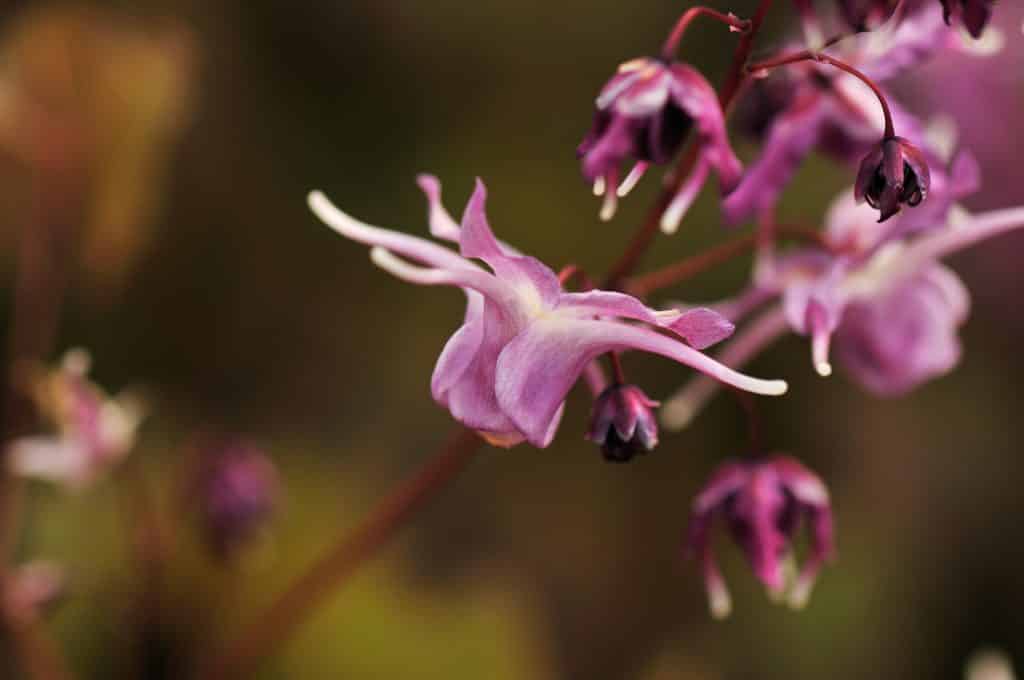
Also known as large-flowered barrenwort, they are native to woodland areas of Japan, Korea, and the Manchuria region.
They have been used as herbs in China for various treatments for the past 2,000 years.
These low-growing perennials typically grow up to 2 feet tall.
They prefer part to full shade with average, dry to medium moisture, well-drained soils. Hummus-rich, fertile, moist soils in part shade are the ideal environment.
They blossom in spring, and the flowers are pink, white, yellow, or purple. Their leaves come in different shapes, from lanceolate to heart-shaped.
These deer-resistant plants prefer a cool woodland environment, making them perfect for growing under a Cedar tree.
However, they do not have any serious problems related to insects or diseases.
8. Eleutherococcus Sieboldianus (Fiveleaf Aralia)

An adaptable and durable shrub is suitable in a wide range of soils (sandy, loamy, clay), even if the soil is nutritionally poor.
This plant thrives under full sun to shade environments and has good tolerance to drought, shearing, and pollution.
They are a species of the family Araliaceae, native to the Anhui province in China.
They are first introduced as ornamental plants in North America.
These shrubs can grow up to 8 feet tall; the small greenish-white flowers blossom in late spring and early summer between May and June.
They have thorns, making them a good candidate for landscape designers to use as security planting, setting barriers, or borders.
9. Polystichum Acrostichoides (Christmas Fern)
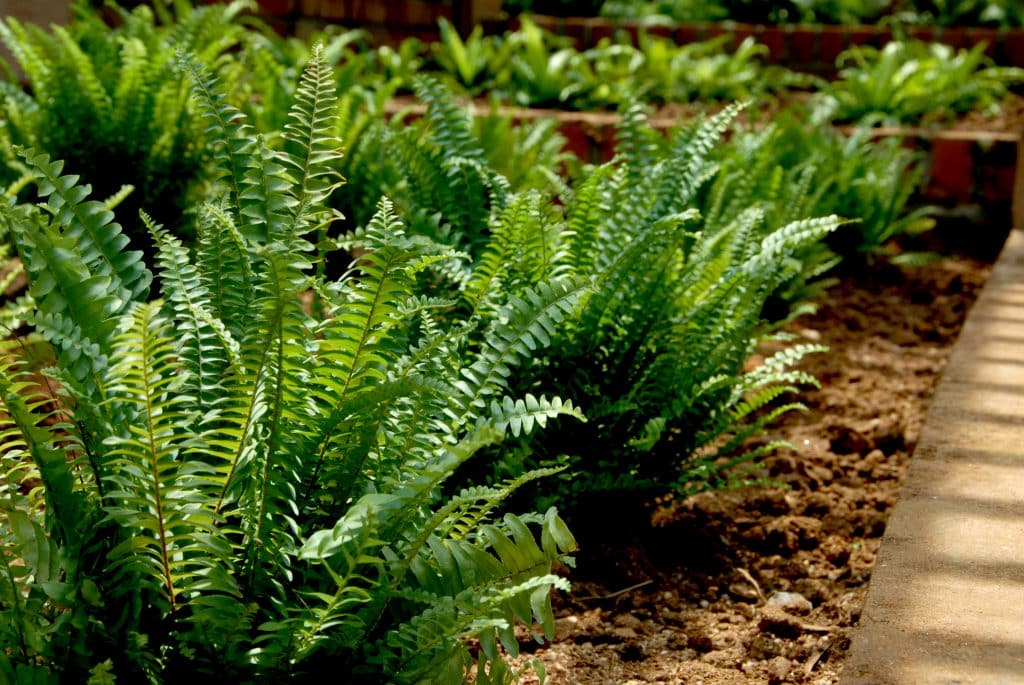
You will often see mass planting of these ferns on slopes (dryish or rocky) as they are excellent for preventing soil erosions.
They can also be used for foundation planting, along the walls, or as borders since they are resistant to fire.
This evergreen fern gets its name because it stays green throughout the year, even during Christmas.
They are resistant to Deer, Rabbits, and Squirrels though they attract Ruffed Grouse, and Songbirds use them to build their nests.
Due to their sensitivity, these plants do best in well-draining soil with plenty of organic matter and shade from harsh sunlight.
They cannot handle clay soils and shouldn’t be juddering around near standing water.
10. Platycodon Grandiflorus (Balloon Flower)
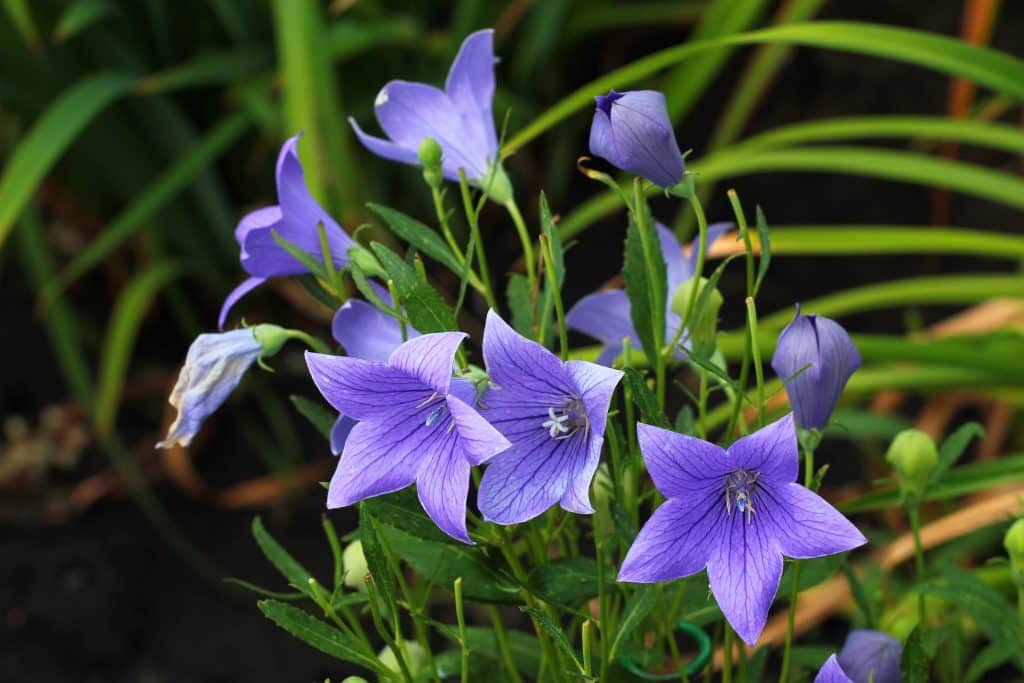
These clump-forming plants are common throughout Japan, China, the Korean peninsula, and eastern Siberia.
Depending on their natural habitat preference, they can grow in mountain areas or fields.
They’re an excellent plant for the sun! You can grow them in full sunlight to part shade with good results.
Root rot may occur in overly moist soils.
Rarely exceed 2.5 feet in height when fully grown; these plants bloom between June and August during the Summer period.
The balloon-like swelling is something that you won’t see on other plants, and it’s sure to catch your eye!
To get the most flowers from this plant, plant them in full sun with at least six hours of sunlight on most days.
Conclusion
Deciding what plant to grow under a Cedar Tree can be difficult, but it’s worth the effort.
You’ll find many options available, and you should do your research before deciding which is best for you.
When choosing plants for placement near Cedar trees, consider their light requirements and soil conditions; these factors will affect whether or not they thrive in this environment.
As always, patience is key with gardening, so don’t rush into planting any seedlings just yet.
Instead, make sure to pay attention to how much sun each type requires and if they’ll grow in moist.


